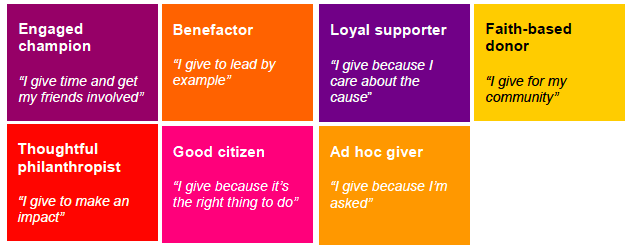Think tanks have to fundraise. Think tank directors and even individual researchers must spend significant portions of their time fundraising. This is true everywhere -even in developed countries where domestic funding for think tanks is possibly more readily available than in developing countries.+
Want to lean more about think tank fundraising? Checkout:
- What does a successful funding model look like?
- It takes a village to raise funds: the role of management, trustees and donors in fundraising
- Funding and supporting Think Tanks Theme
However, approaching new funders is never quite a researchers’ favourite activity. They often face rejection and are quick to turn back to their usual supporters.
Not all funders are the same
We have argued over and over again that think tanks are not all equal (they have different needs) and that they ought to be treated accordingly by their funders.
But funders are different too. Just as think tanks would approach their policy audiences, they should approach their funders through differentiated tactics.
Research by NPC (New Philanthropy Capital) in the UK, Money for Good UK, and by Hope Consulting in the US, suggests that donors can be segmented to better understand their motivations for funding.
Here is a good video summary:
Segmentation is useful because it can help think tanks to:
- Work out how best to communicate with their existing funders and recognise their support;
- Focus their efforts on funders most likely to support them; and
- Assess the likelihood of being able to influence donors to give them money and/or remain loyal to them in the long run.
Seven types of funders
The studies outline seven segments of funders:

Not all types of funders match well with the funding needs of think tanks, of course. But the NCP analysis provides a useful way of undersigning what motivates each. For those funders who are relevant to think tanks and policy research centres, their motivations are:
Driven by the cause
There are those motivated by a particular cause -interested in supporting efforts to improve education in a country, access to water and sanitation, etc. This is likely to involve (stats refer to the UK study –Money for Good UK):



Driven by personal links
Others, however, are more likely to fund the work of people or organisations that they have personal connections with -such as university alumni, former staff members (even former junior assistants), friends and family members, etc.This is likely to involve:

Duty to give
There are other funders driven by the idea of duty. This can be a moral duty or a statutory duty (for example, in the case of foundations: this is what their mandate says they should do).This is likely to involve:


Yet others may reject duty but still feel compelled to give funding because they wish to be seen as role models:


Giving privately and publicly
Different types of funders may also choose to donate privately and publicly- and think tanks ought to know this before asking them for funding. By private, here, we do not necessarily mean that the funders may not wish for their donation or support to be made public, but rather that they are not necessarily driven by high-publicity funding. +
Those who want to give publicly may include:



While those who prefer to give privately, may include:

Impact (interest in)
Finally, there are funders driven by an interest in impact. They are likely to fund if they perceive there will be a high return to their funding, and they will be looking for results in the short run.



In this case we also could consider faith-based donors or, if we interpret this group slightly, ideology-based donors who are interested in giving only to those who support their interests- ‘their community’:

Others, however, may be less interested:


Implication for think tanks
Think tanks across the world have listened to the calls (by their funders and supporters) for them to pay greater attention to their policy audiences. Few think tanks would argue against greater investments in communications staff and resources and many would champion a business model that places policy objectives at the driving seat of anything they do.
However, funding is still a main concern for think tanks. Few – very few- have endowments. Funding is what makes it possible for think tanks to deliver great research and policy ideas.
Along with people, funds are a think tank’s main input. But few think tanks pay as much attention to their inputs as they do to their outputs.

